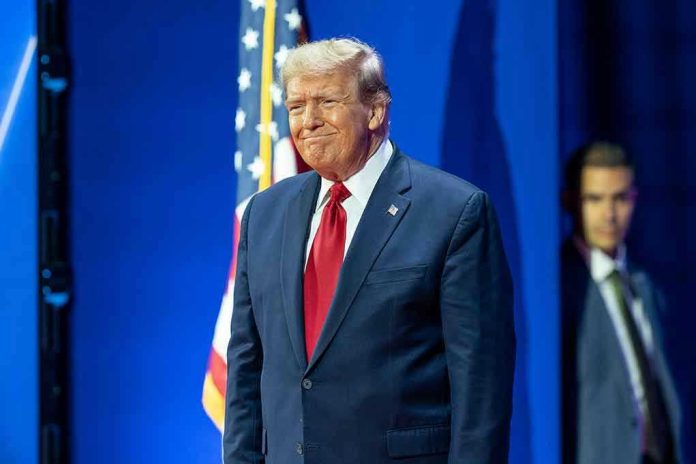
Trump’s 28-point Ukraine peace plan didn’t just surprise Congress—it sent a seismic jolt through the halls of Washington, exposing divisions and raising urgent questions about America’s role in ending Europe’s bloodiest conflict since World War II.
Story Snapshot
- Trump’s detailed Ukraine peace proposal caught U.S. lawmakers off guard and ignited immediate controversy.
- At least one Republican publicly warned the plan seemed to strongly favor Moscow’s interests.
- The 28-point plan signals a major shift in U.S. diplomatic engagement with the Ukraine war.
- Congressional supporters of Kyiv were blindsided, with implications for both U.S. politics and the global order.
Trump’s Ukraine Peace Plan Lands Like a Grenade on Capitol Hill
Congress expected the usual political maneuvering—tough rhetoric, vague promises—but not a sweeping, granular peace plan on Ukraine from Donald Trump. The 28 points, reportedly drafted by Trump administration officials, outline a vision for ending Russia’s war against Ukraine, but the specifics left many lawmakers, especially those championing Kyiv’s cause, stunned and scrambling for details. The plan’s sudden emergence in political discourse disrupted the status quo, forcing both parties to confront questions they thought were settled.
Trump’s allies and detractors alike rushed to analyze the proposal’s substance. Early reactions reveal a pattern: those who have argued for robust U.S. military support to Ukraine feel the plan undercuts years of bipartisan policy. The fact that at least one prominent Republican described the plan as “largely pro-Moscow” signals not just partisan tension but a deeper debate over America’s identity as a security guarantor in Europe. The proposal’s complexity—28 distinct points—suggests a strategic effort to change the conversation, forcing lawmakers to respond to specifics rather than slogans, and making it nearly impossible to dismiss the plan with a sound bite.
Key Points of Contention: Is This a Peace Plan or a Concession?
Lawmakers and analysts quickly zeroed in on the plan’s most controversial elements. Critics argue that several provisions read less like a peace blueprint and more like a roadmap for Ukrainian concessions to Moscow. Proponents, however, insist the plan simply recognizes geopolitical realities and aims to halt further bloodshed. The ambiguity has fueled fierce speculation about Trump’s motivations: is this a genuine attempt to end the war, or a calculated move to realign U.S. foreign policy away from costly entanglements abroad?
Supporters of Ukraine in Congress, both Democrats and Republicans, now face a dilemma. Publicly opposing the plan risks alienating voters weary of endless conflict, while embracing it could be seen as abandoning an ally. The sharp reaction from at least one Republican, warning that the plan appears pro-Moscow, reflects this political bind. The debate exposes the fragility of the consensus that has so far guided U.S. policy toward Ukraine, and the way a single, unexpected proposal can upend months—or years—of careful positioning.
Ripple Effects: What Happens Next for U.S. Policy and Global Alliances?
The unveiling of this peace plan has ripple effects far beyond Washington. European allies, already anxious about wavering U.S. support, must now contend with the possibility of a major shift in American commitment to Ukraine’s defense. For Moscow, the plan’s favorable elements could be seized upon as proof that its strategy of waiting out Western resolve is paying dividends. For Kyiv, the message is painfully clear: continued U.S. support is no longer guaranteed, and the political winds in Washington are shifting.
The debate around the plan is just beginning. Each of the 28 points will be scrutinized, dissected, and leveraged in the months ahead—by presidential hopefuls, congressional candidates, foreign governments, and advocacy groups. The fate of Ukraine, and America’s role in shaping the postwar order, now hangs in the balance. The only certainty is that the ground has shifted, and the war in Ukraine is no longer just a distant conflict—it is now a central issue in America’s own political crossroads.
Sources:
Trump administration ‘secretly working’ on 28-point peace plan with Russia to end Ukraine war















